Trekking poles exhibit mixed feelings, some people love them while some prefer swinging with their hands. Needless to say, they save you from joint injuries, provide grip, and make a trek easier.
A few days ago, my friend Deepanshu solicited me to go on a trek with him. Being a naturalist, I agreed, anticipating the breathtaking views of two shortlisted trekking destinations in India – Kedarkantha and Har Ki Dun trek. This spark caught fire when I read travel blogs and saw jaw-dropping pictures and videos of these treks.
If you Google, you’ll find both these treks are very long (2-5 days) covering a distance of around 20-26 km or so from Sankri village in Uttarakhand, India. We didn’t finalize which one we’ll go with and when. That trek is yet to happen in reality, but it caused me to research and find out that trekking poles are recommended on these treks.
To whatever amount of itsy bitsy treks I’ve done, I never used a trekking pole. I clearly remember using wooden sticks bought for INR 10 on the Kheerganga trek (by the way, it helped a lot). But considering you’re going on a harsh and long trek, leaving without a trekking pole may not be a good idea, especially in some cases (more on this later).
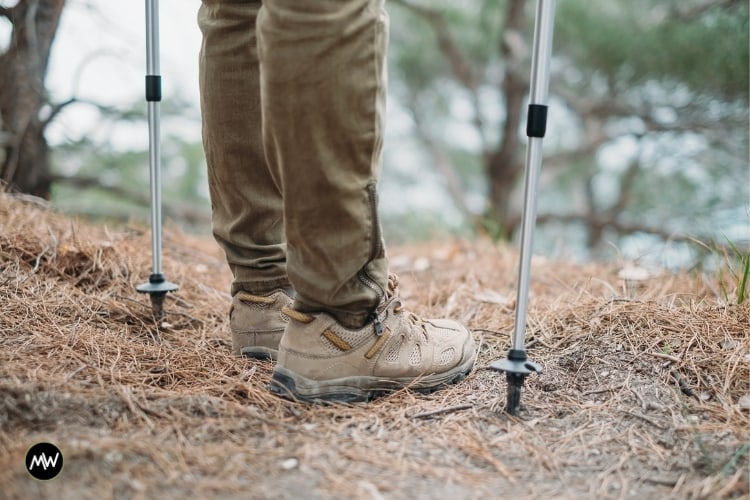
So, what’s the deal? Should we use trekking poles or it’s just another liability? I’m gonna show in which circumstances you’ll need it and what are its advantages. Everything is backed up by solid research, advice from real travelers (like you and I). Also, I picked 13 of my favorite trekking poles from my recent research.
Trekking Pole – Is it Worth Carrying?
You should definitely carry trekking poles for your hike or trek if you:
- Have joint problems,
- Have back or neck problems,
- Find trouble balancing your body,
- Wanna engage your arms as well,
- Are going to ‘difficult’ or ‘advanced’ level trek.
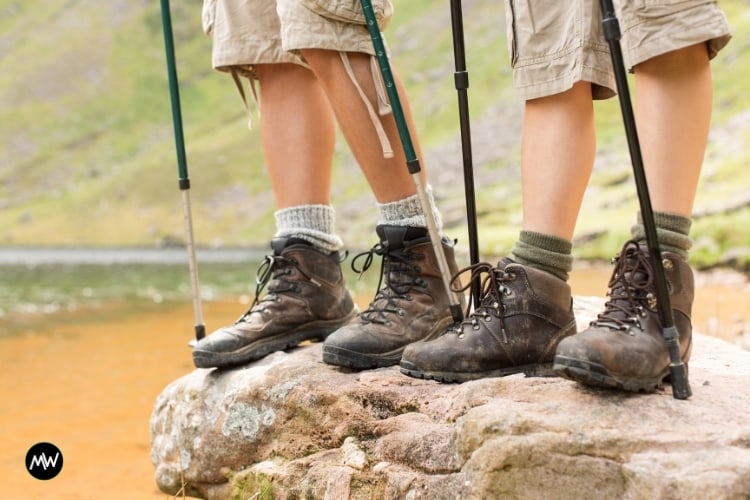
Trekking poles aren’t necessary piece of travel gear for medium and beginner level treks, where you won’t face troubling trails and difficulty to balance yourself. However, for snow and difficult treks, the game is different. For example, tips and baskets in trekking poles provide better traction on the hard surfaces and help you in balancing.
Let’s discuss in brief the pros and cons of using trekking poles and then you shall make an informed choice based on your common sense. Deal?
Pros and Cons of Trekking Poles
Cons
Let’s not hit the sweet spot right away and look at the disadvantages of a trekking pole.
- It Might Feel Like A Liability: Trekking poles are not absolutely for everyone and every trek. Some people feel clumsy or unmanageable carrying a trekking pole. And you know what, it’s perfectly alright to leave it unless your trek or hike strictly doesn’t allow you to do so.
- The Good Ones Are Costly: The cheap trekking poles aren’t worth it. a). They tear down easily, and b). They aren’t mostly reliable. But this is understandable.
- An Extra Bit of Exhaustion: Carrying a trekking pole will engage your arms and upper body and so at the end of a long trek, you may feel exhausted more than usual. But this is actually not a con if you look from a perception that it has helped to shed more calories and enhance your stamina. On the other hand, if you love swaying with your hands and click nature photos with your point-and-shoot camera, this is concerning.
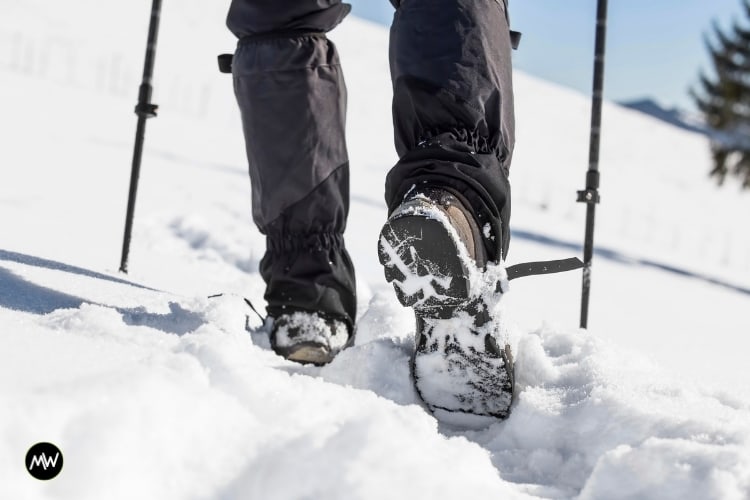
Pros
Okay, so after the cons, let’s see the advantages of this travel gear.
- Engage Your Arms: When you trek, your lower body part is engaged most. Using a trekking pole gives your arms & upper body something to do and improves blood circulation as you ascend to thin-air (low oxygen) and elevated sites. And it can also prevent swelling of your hands.
- Maintain Your Balance: Trekking poles help you to maintain balance. It can help you cross tricky trails, help you stand straight for a sigh of relief, and act as a set of an extra pair of legs. When you trek, the ground isn’t a plain pitch, but an unexpected trail of ups, downs, and twisted turns.
- Help The Joints: Have you ever felt that extra weight while descending or hiking down from an elevated trek? I have felt and I am sure you too have felt it. When you use a trekking pole it takes the stress off your joints (hips, knees, ankles, etc). This is true for both hiking up and down.
- Increase Your Pace: As a new pair of your legs, trekking poles increase the pace of walking enabling you to cover more distance in a short amount of time.
- Help You Measure The Depth: While trekking when you come across a river or trick snow trail, trekking poles can help you. Just dip in with the tip and estimate the danger of crossing that river or hazardous snowy trail.
Anatomy
Here’s how a typical trekking pole looks like, all the parts have been explicitly mentioned in the picture and a brief is given below.
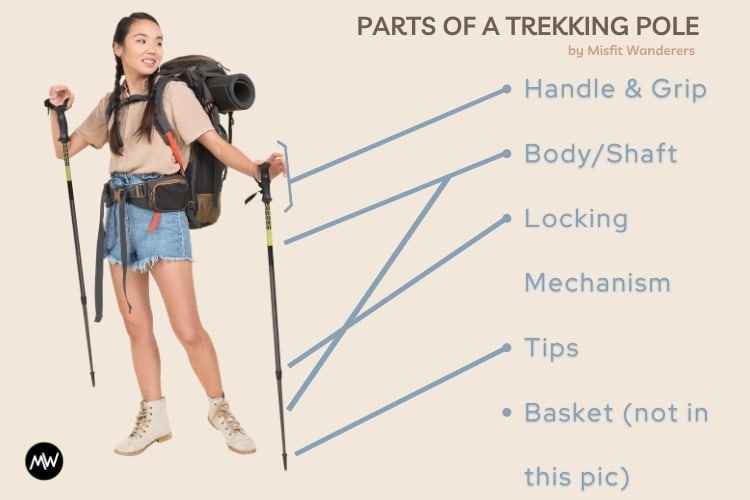
Things To Consider Before Buying One
You’ve understood the BIG picture that why trekking poles are necessary (and in cases when it’s not) and have a basic understanding of the parts of a trekking pole. Let me break it further and show you things you must consider before buying a trekking pole. Make an informed choice!
- Trekking Pole Tips: These are the lowermost part of your trekking pole that completely touches the ground. Tips generally are made of two materials – carbide tips and plastic tips. Carbide trips increase traction and pole’s grip on nature’s best surfaces like snow, rough trails, etc, and hence are best suited for the same. Plastic tips are recommended for plain surfaces as they tear down easily when used on rough surfaces of nature. Most poles come with both these and they can easily be changed using a DIY method. These can be bought separately provided your pole supports the installation.
- Pole Basket/Caps: These are umbrella-like caps installed at the lower part of a trekking pole provide an extra layer of security. It prevents the pole from sinking on soft, muddy, or snowy surfaces. This helps you to stay stable and keep your walking pace. These too can be bought separately.
- Body Material: The body or shaft of a trekking pole is made of primarily two materials – carbon fiber or aluminum. While carbon fiber is lightweight, sturdy, durable, and reliable, they are not as resilient under stress as aluminum poles are. Aluminum poles are a few grams heavier than carbon fiber poles. Make sure you decide the type of material before buying a trekking pole.
- Handles, Grip & Strap: – The handles of trekking poles are of two shapes – I-shaped and T-shaped. The handle grip of a trekking pole can be of foam, rubber, cork, or plastic. Cork is the one which you should go with as it doesn’t cause sweat in your hands and provides a firm grip even when wet. Trekking poles with cork grip are a bit costlier than other types of handle grips. The strap of the pole provides you more control over your pole.
- Locking Mechanism/Adjustability: – It is how a trekking pole folds. Lever lock mechanism, push-button lock, twist-lock, etc, are a few locking/folding mechanisms that come in a pole. Some poles don’t lock/fold at all and I request you to stay away from it.
- Shock Absorbers: Some poles have anti-shock, meaning they have a suspension mechanism that absorbs the shock and provides you comfortable hiking. Although it’s hard that you’ll practically notice it. So in reality, they don’t come up with even the costliest poles.
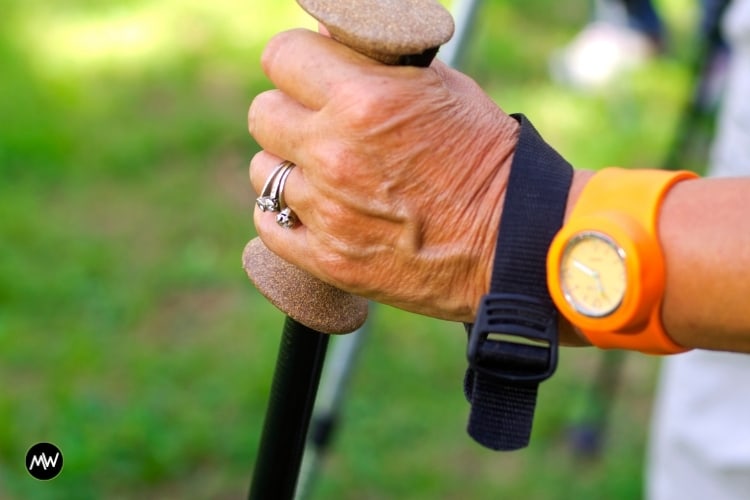
Our 13 Best Picks
Okay, now that you’ve understood the aspects, let’s look at some of the best poles that you should consider buying under your budget.
Budget?
Oh, yeah! They usually cost you anywhere between INR 200 – INR 12,000 OR $3 – $200. Let me categorize our list of 13, here’s how:
- Category 1: INR 500 to 3000 (USD 6 to 40)
- Category 2: INR 3000 to 6000 (USD 40 to 80)
- Category 3: INR 6000+ (USD 80+)
If you prefer the tabular form, scan this table:
| Brand Name | Approx. Price in INR & USD (may vary as per availability) | Buying Link |
|---|---|---|
| UDee | 700 ($10) | Check Here |
| Medvision | 800 ($11) | Check Here |
| Coleman | 1200 ($16) | Check Here |
| ADD Gear | 2900 ($39) | Check Here |
| Forclaz | 3000 ($40) | NA |
| A ALAFEN | 4500 ($61) | Check Here |
| Grand Expedition Ridgecross | 5100 ($70) | Check Here |
| Retrospec High Point | 5300 ($72) | Check Here |
| XMmux | 5400 ($73) | Check Here |
| TOLKA | 6500 ($88) | Check Here |
| Foxelli | 8300 ($112) | Check Here |
| Far North Exchange | 8500 ($115) | Check Here |
| Cascade Mountain Tech | 11000 ($150) | Check Here |
Category 1: INR 500 to 3000 (USD 6 to 40)
1. UDee

| Handle Grip Type | I-Shaped |
| Handle Grip Material | Plastic and foam |
| Wrist Strap | Yes, made of foam |
| Shaft Material | Aluminum alloy |
| Basket/Caps | Not provided |
| Tips | Plastic, no extra tips. |
| Weight | 100 grams |
| Locking Mechanism | Push-type |
| Shock Absorber | Yes |
What we like:
- The lightweight design.
- Good for beginners.
- Can be used for beginner level treks.
What we don’t like:
- The build quality is not up to the mark.
- It is not durable.
- Handle grip is made up of plastic.
- Basket caps and extra tips aren’t provided.
2. Medvision

| Handle Grip Type | I-Shaped |
| Handle Grip Material | Plastic and foam |
| Wrist Strap | Yes |
| Shaft Material | Aluminum |
| Basket/Caps | Yes, 1 provided |
| Tips | Plastic, 1 extra tip. |
| Weight | 335 grams |
| Locking Mechanism | Telescopic |
| Shock Absorber | Yes |
What we like:
- Good for beginners.
- It is made of aluminum.
- Can be used for beginner level treks.
What we don’t like:
- The build quality is okayish.
- The shock absorber is based on a spring mechanism.
- Handle grip is made up of plastic.
3. Coleman

| Handle Grip Type | I-Shaped |
| Handle Grip Material | Cork |
| Wrist Strap | Yes, nylon |
| Shaft Material | Aluminum |
| Basket/Caps | No |
| Tips | Plastic |
| Weight | 340 grams |
| Locking Mechanism | Telescopic |
| Shock Absorber | Yes |
What we like:
- The handle grip is made up of cork.
- It is made of aluminum.
- Can be used for beginner level treks.
- The build quality seems good.
What we don’t like:
- There are no baskets or extra tips.
- I-shape.
- The strap could have been better.
4. ADD GEAR

| Handle Grip Type | I-Shaped |
| Handle Grip Material | EVA Foam |
| Wrist Strap | Yes, nylon |
| Shaft Material | Aerospace-grade 7075 aluminum |
| Basket/Caps | Yes |
| Tips | Carbide-tungsten with 1 plastic tip cover |
| Weight | 260 grams |
| Locking Mechanism | Twist-lock |
| Shock Absorber | Yes |
What we like:
- The tip has carbide-tungsten which is more durable.
- Incredibly lightweight with aerospace-grade aluminum shaft material.
- The twist-lock mechanism is better.
- The build quality seems good too.
What we don’t like:
- There are no baskets or extra tips.
- I-shape.
- The handle grip foam could have been made up of cork.
5. Forclaz Compact

| Handle Grip Type | I-Shaped |
| Handle Grip Material | Foam |
| Wrist Strap | Yes, good quality |
| Shaft Material | A mix of aluminum and polypropylene which is able to withstand higher temperatures |
| Basket/Caps | Yes, 1 extra provided |
| Tips | Carbide with 1 plastic tip cover |
| Weight | NA |
| Locking Mechanism | External lever-lock |
| Shock Absorber | No |
What we like:
- The product is from a well-known brand – Decathlon.
- The product comes with a 2 year warranty.
- The wrist strap seems very good quality.
- The external level-lock mechanism feels easier.
- The build quality seems good too with a mix of aluminum and PP.
What we don’t like:
- There is no shock-absorber.
- The handle grip foam could have been made up of cork.
Category 2: INR 3000 to 6000 (USD 40 to 80)
6. A ALAFEN

| Handle Grip Type | I-Shaped |
| Handle Grip Material | Foam |
| Wrist Strap | Yes, adjustable |
| Shaft Material | 7075 Aluminum |
| Basket/Caps | Yes, 1 provided |
| Tips | Tungsten-steel with 1 plastic cover |
| Weight | 318 grams |
| Locking Mechanism | External lever-lock with tension adjustment |
| Shock Absorber | No |
What we like:
- The wrist strap is adjustable.
- The wrist strap seems of good quality.
- The external level-lock mechanism have a button to adjust tension.
- The build quality seems okay.
What we don’t like:
- The tip is of tungsten-steel and not carbide, it’ll wear off easily.
- There is no shock-absorber.
- The handle grip foam could have been made up of cork.
7. Grand Expedition Ridgecross

| Handle Grip Type | I-Shaped |
| Handle Grip Material | Foam |
| Wrist Strap | Yes |
| Shaft Material | Aerospace grade aluminum |
| Basket/Caps | Yes, 2 extra provided |
| Tips | Tip material unknown, comes with 1 plastic cover |
| Weight | 570 grams |
| Locking Mechanism | Clamp lock |
| Shock Absorber | No |
What we like:
- The shaft material is good quality aluminum.
- The clamp-lock mechanism is better than lever-lock.
- The build quality seems great.
What we don’t like:
- They haven’t clearly stated the material of tip.
- There is no shock-absorber.
- The handle grip foam could have been made up of cork.
8. Retrospec High Point

| Handle Grip Type | I-Shaped |
| Handle Grip Material | Foam |
| Wrist Strap | Yes |
| Shaft Material | Aluminum |
| Basket/Caps | Yes, 4 extra provided |
| Tips | Carbide, comes with 2 plastic cover |
| Weight | 794 grams |
| Locking Mechanism | External lever-lock with tension adjustment |
| Shock Absorber | No |
What we like:
- They are providing baskets for muddy and snowy trails.
- They are giving 2 tip cover/boots for flat or rocky surfaces.
- The shaft material is good quality aluminum.
- The tip is made up of carbide.
- The wrist strap is adjustable.
- The build quality seems awesome.
What we don’t like:
- They are very heavy.
- There is no shock-absorber.
- The handle grip foam could have been made up of cork.
9. XMmux

| Handle Grip Type | I-Shaped |
| Handle Grip Material | Cork |
| Wrist Strap | Yes |
| Shaft Material | Aluminum |
| Basket/Caps | Yes, 4 extra provided |
| Tips | Tungsten-carbide, comes with 4 plastic cover/boots |
| Weight | 953 grams |
| Locking Mechanism | External lever-lock with tension adjustment |
| Shock Absorber | No |
What we like:
- They are providing 4 baskets including muddy and snowy trails.
- They are giving 4 tip cover/boots for flat or rocky surfaces.
- The shaft material is good quality aluminum.
- The tip is made up of tungsten-carbide.
- The wrist strap is adjustable.
- The build quality seems very good considering except shaft all other parts made of carbon fiber.
What we don’t like:
- There is no shock-absorber.
- The shaft could have been of carbon fiber and hence made the pole lighter.
Category 3: INR 6000+ or USD 80+
10. TOLKA

| Handle Grip Type | I-Shaped |
| Handle Grip Material | Natural Cork |
| Wrist Strap | Yes, adjustable |
| Shaft Material | 7075 Aluminum |
| Basket/Caps | Yes, 4 extra provided |
| Tips | Tungsten-carbide, comes with 4 plastic cover/boots |
| Weight | 658 grams |
| Locking Mechanism | External lever-lock with tension adjustment |
| Shock Absorber | No but they claim to have a ‘springy-feel’ |
What we like:
- They are providing 4 baskets including muddy and snowy trails.
- They are giving 4 tip cover/boots for flat or rocky surfaces.
- They are giving 2 year warranty.
- The shaft material is aluminum, still quite lightweight. Other parts are made up of impact-resistant ABS material.
- The tip is made up of tungsten-carbide.
- This pole is similar to the previous one in terms of features yet lighter than that.
- The build quality seems awesome.
What we don’t like:
- There is ‘kinda’ shock-absorber.
- Shaft could have been of carbon fiber.
11. Foxelli

| Handle Grip Type | I-Shaped |
| Handle Grip Material | Natural Cork, full length |
| Wrist Strap | Yes, adjustable and cushioned |
| Shaft Material | 7075 Aluminum |
| Basket/Caps | Yes, 4 extra provided |
| Tips | Carbide made, comes with 4 plastic cover/boots |
| Weight | 266 grams |
| Locking Mechanism | External lever-lock |
| Shock Absorber | No |
What we like:
- This is perhaps the only pole yet which has all the features and yet weighs only 266 grams or ~9.5 oz.
- They are providing 4 baskets for all seasons.
- They are giving 4 tip cover/boots.
- They are giving a 3-year warranty for defects and a 120-days warranty for the complete pole.
- The tip is made up of carbide.
- The build quality seems superb.
What we don’t like:
- There is no shock-absorber.
- The shaft could have been of carbon fiber.
12. Far North Exchange

| Handle Grip Type | I-Shaped |
| Handle Grip Material | Natural Cork |
| Wrist Strap | Yes, padded |
| Shaft Material | 7075 Aluminum |
| Basket/Caps | Yes, 4 extra provided |
| Tips | Carbide made, comes with 4 plastic cover/boots |
| Weight | 612 grams |
| Locking Mechanism | External lever-lock |
| Shock Absorber | No |
What we like:
- They are providing 4 baskets for all seasons.
- They are giving 4 tip cover/boots.
- The tip is made up of carbide.
- The color variants are appealing.
- The build quality seems superb.
What we don’t like:
- There is no shock-absorber.
- The shaft could have been of carbon fiber.
13. Cascade Mountain Tech

| Handle Grip Type | I-Shaped |
| Handle Grip Material | Natural Cork, extended |
| Wrist Strap | Yes |
| Shaft Material | Carbon fiber |
| Basket/Caps | Yes, 4 extra provided |
| Tips | Tungsten-carbide, comes with 4 plastic cover/boots |
| Weight | 220 grams |
| Locking Mechanism | External lever-lock with tension adjustment |
| Shock Absorber | No |
What we like:
- This only weighs 220 grams – incredible.
- The shaft is made from carbon fiber.
- They are providing 4 baskets for all seasons.
- They are giving 4 tip cover/boots.
- The tip is made up of carbide.
- The cork is extended beyond handle.
What we don’t like:
- There is no shock-absorber.
In The End
If you have minutely scanned this post, you must have noticed two things:
- Shock absorbers aren’t even on the costliest ones.
- None of the poles were T-shaped.
For shock absorbers, I already told them that they make very little difference. So practically they are not of much use. On the other hand, T-shaped poles have become obsolete and this shape mostly comes up with walking sticks or cheap trekking poles. They are replaced by a wrist strap which is more gripping during treks.
Our best picks are Cascade Mountain Tech and Forclaz Compact trekking pole.

So, what do you think? Are you going to buy a trekking pole? Have you wishlist-ed any of our picks? Let me know your thoughts. In case you have any problem, please speak as well.

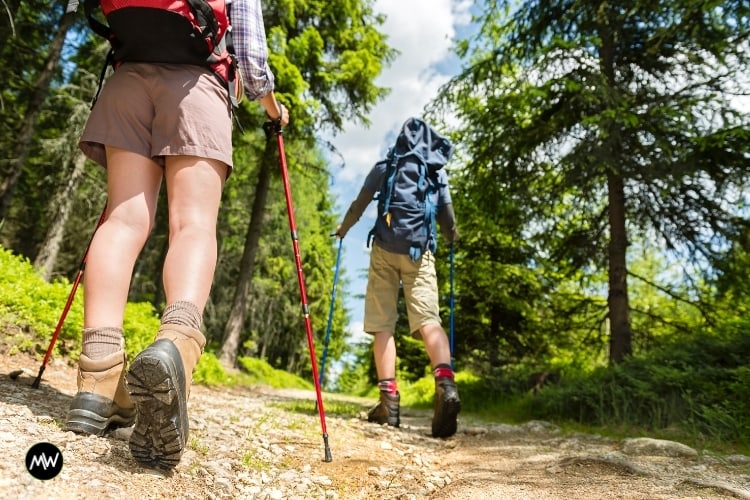
Trekking pole is also helpful while trekking to keep the wild animals at bay if you encounter one.
Yes indeed, Ashok. Thanks for sharing this 🙂 With your permission, can we also include your suggestion in this post?